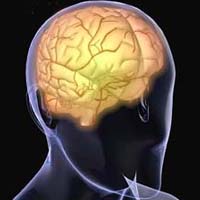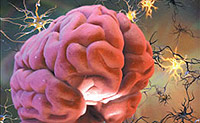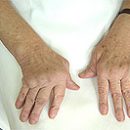Cork dysplasia includes several options for violation of the organization of nerve cells in the brain. Lissencephalia is underdevelopment of brain sinks with a smooth surface of the brain hemisphey.
Content
Cortical dysplasia
The concept of cortical dysplasia combines the following options for violation of the organization of nerve cells:
- Lissencephalia (Agiriiya)
- Pakhigiriya
- Micropoligiria
- Schistencephalia
- Transmantine dysplasia
All these brain abnormalities can be focal and generalized.
Lissencephalia and Pakhigirii
 Lissencephalia (Agiiriya) and Pakhigiria - underdevelopment of brain souls with a smooth surface of the brain hemispheres, may be total and focal. In general, the mental retardation is characteristic of Lissencephalia, the early beginning of the epilepsy. It is found equally often like girls and boys. Often registered on an echoorencephalogram. Total agihyry is accompanied by ribbon heterotopia, known as syndrome «Double bark».
Lissencephalia (Agiiriya) and Pakhigiria - underdevelopment of brain souls with a smooth surface of the brain hemispheres, may be total and focal. In general, the mental retardation is characteristic of Lissencephalia, the early beginning of the epilepsy. It is found equally often like girls and boys. Often registered on an echoorencephalogram. Total agihyry is accompanied by ribbon heterotopia, known as syndrome «Double bark».
Described two morphological types of Lissencephalia.
1st - type of Bilschowski, for which 4-layer bark is characteristic. The fourth layer is formed from heterotopic neurons. This type is often associated with other anomalies - heterotopia, macro- and microhyroids, schistencephalia, etc.
Patients have hypotension, mental retardation, epileptic seizures. This type has genetic and chromosomal heredity. It is the main morphological sign of warbrosc and secloshel syndromes (dwarfishness with pyruses), Miller-Dilker and Norman-Roberts syndromes (epilepsy, mental retardation, facial dysmorphism and other stigmas) associated with deletion (doubling) of the 17th chromosome.
2nd Type - Walker's Lissencephalia with a complete absence of a cortical layer. Combined with hypoplasia (underdevelopment) cerebellum, eye anomaly and other changes in the brain.
Features of microgery
Microhydia (micropoligirium) - a disease in which the brain is a lot of small, short, shallow schulavo. More often found focal (localized) microhydia of various areas. It may be the structural basis of many genetic and chromosomal syndromes (Dandy-Walker, Arnold-Chiary, Clevegra, neonatal adrenolesophyter, etc.). Microhydia is a morphological defect with Foix-Chavany-Marie syndrome (mental retardation and pseudobulberry paralysis).
Microhydia (polyamicrhydrium) is another variant of cortical dysplasia, denoting a plot of set small, shallow schologists with a disruption of the structure of the gray substance. Polyimicrhyry got a name «Congenital bilateral perisilviev syndrome». Its symptoms are: congenital central diploggy (paralysis) of facial, pharyngeal and chewing muscles, 100% violation of the movement of the language in combination with mental retardation and epilepsy. Convulsions debut, as a rule, in the first year of life. In nature, they can be both focal (local) and generalized, are not amenable to anticonvulsant therapy.
Focal cork dysplasia
Focal cork dysplasia - partial violation of the processes of nervous system development, resulting in the formation of pathological cortex. The area of preferential localization of focal cortical dysplasia - frontal and temporal brain departments.
For focal cortical dysplasia are characterized by severe, demonstrative and sometimes unusual motor phenomena (gesture automates (de Novo), pedaling on the type of tramming in place), accompanying seizures.









